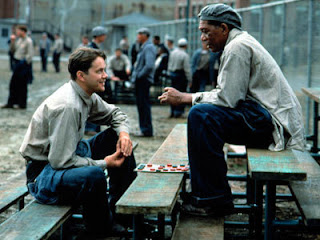Blog Archive
About Me

- John
- Birmingham, West Midlands, United Kingdom
- Aspiring illustrator for the computer games industry. Currently Studying Visual Communication at the Birmingham Institute of Art and Design
 Production and interpretation
Production and interpretation
01:32 | Posted by
John |
Edit Post
Interpretation
Interpretation will always be subject to the spatial and temporal situation of an individual. An illustrator’s interpretation of work will be moulded through an understanding of it’s historical context. For example, a religious painting would have evoked much more emotion to someone viewing it at a time where to be religious was somewhat compulsory and innate due to that individual’s place in history. An illustrator of today would have to comprehend this to interpret such work but it would inevitably never be appreciated truly the same way as someone viewing it in that period of history. Illustrator’s and ‘creative’s’ incorporate the ‘Zeitgeist’ (which means, ideas and spirit of the time) of their time in order to interpret work with more informed judgment. Many artists in every sense of the word have different interpretations and visions on a how a common piece of work, usually contemporary, should be presented. For example, Lewis Caroll’s novel: Alice in Wonderland has been adapted into film by many different individuals who had particular ideas of how they wanted to portray the story. One of the most notable to take is that of Jan Švankmajer, Švankmajer was concerned with the grotesque and this ideology effected his inspiration and lead to his somewhat ‘disturbing but not repulsive’ portrayal of the children’s story. Then if we take the most recent adaptation, Time Burton’s, we note he, as an artist is more concerned with the characters. Although he somewhat deviates from the original telling, he pays particular attention to detail in character design etcetera. This shows clearly the importance an individual’s interpretation when considering work and the amplification of the ‘meaning’ within a message.
Production
Another important principle to consider when looking at an illustrator’s production and outcomes is the testing of one’s work and how an illustrator may convey this to their audience. There are many means for an illustrator to test their work and get feedback in order to disseminate it with success. This could be to publish their work, exhibit it in galleries, and post it on forums, through social networking sites and other general websites. This entitles the illustrator to constructive feedback from the general public, alongside friends, critics and other artists. As a result of this feedback, the illustrator may then edit and reedit their work in order to perfect the outcome they desire. The illustrator will not only receive feedback for their work but also gain a general reaction which may shape the direction they then wish to pursue.
Interpretation will always be subject to the spatial and temporal situation of an individual. An illustrator’s interpretation of work will be moulded through an understanding of it’s historical context. For example, a religious painting would have evoked much more emotion to someone viewing it at a time where to be religious was somewhat compulsory and innate due to that individual’s place in history. An illustrator of today would have to comprehend this to interpret such work but it would inevitably never be appreciated truly the same way as someone viewing it in that period of history. Illustrator’s and ‘creative’s’ incorporate the ‘Zeitgeist’ (which means, ideas and spirit of the time) of their time in order to interpret work with more informed judgment. Many artists in every sense of the word have different interpretations and visions on a how a common piece of work, usually contemporary, should be presented. For example, Lewis Caroll’s novel: Alice in Wonderland has been adapted into film by many different individuals who had particular ideas of how they wanted to portray the story. One of the most notable to take is that of Jan Švankmajer, Švankmajer was concerned with the grotesque and this ideology effected his inspiration and lead to his somewhat ‘disturbing but not repulsive’ portrayal of the children’s story. Then if we take the most recent adaptation, Time Burton’s, we note he, as an artist is more concerned with the characters. Although he somewhat deviates from the original telling, he pays particular attention to detail in character design etcetera. This shows clearly the importance an individual’s interpretation when considering work and the amplification of the ‘meaning’ within a message.
Production
Another important principle to consider when looking at an illustrator’s production and outcomes is the testing of one’s work and how an illustrator may convey this to their audience. There are many means for an illustrator to test their work and get feedback in order to disseminate it with success. This could be to publish their work, exhibit it in galleries, and post it on forums, through social networking sites and other general websites. This entitles the illustrator to constructive feedback from the general public, alongside friends, critics and other artists. As a result of this feedback, the illustrator may then edit and reedit their work in order to perfect the outcome they desire. The illustrator will not only receive feedback for their work but also gain a general reaction which may shape the direction they then wish to pursue.
Tuesday, 11 January 2011
 environment and ideational fluency
environment and ideational fluency
02:02 | Posted by
John |
Edit Post

An illustrator should always be able to adapt to their surroundings and gain inspiration from them. This enforces the importance of reportage illustration as different surroundings lead to different outcomes it is almost inevitable. Managing a creative environment is important; it’s much more than a workspace, which provides ample room to work, it should be personal to the artist and inspire them as individuals. As shown above, Emmanuel Malin states ‘I really enjoy my workstation being a part of my living space...all of this helps me to relax, and I have my designer toys around me, with lots of colour popping out at me everywhere.’ This clearly supports what I have previously suggested. Objects, individuals, music, television, all of these help stimulate Malin’s workflow and allow him to flourish. This should be related to the artist or illustrator as individuals. For example, I personally find music a great inspiration; the mood of the melody has been known to come out in my work. This may be a subconscious development but a brilliant development at that. When evaluating and reviewing my own ideas, I like to have a clean work space in order to do so effectively and accurately, as any illustrator will concur when engrossed in a project, the workspace becomes visually cluttered reflecting the progress and growth of my initial work.
Developing ideational fluency.
When one is working on a project, the development of ideation and the rate at which it is achieved is fundamental to the success of the final project. Ideational fluency refers to the pace in which ideas are grounded and can thus be developed. It is crucial that an artist’s ideas are of sufficient quantity and are diverse enough to be purified and sculpted into a relevant direction. It is essential for this to be given the correct amount of attention in order for certain pieces of work to be perfected which lead to the further development of ideation. Certain tools can be essential for the success of this process; methods such as mind mapping and brainstorming can lead an artist into a specific mind frame which thus leads an artist into the afore mentioned direction which the development of ideational fluency strives to achieve. Here is an example of my personal development of ideational fluency:
 ITAP 5 - Moving Image
ITAP 5 - Moving Image
02:01 | Posted by
John |
Edit Post



The Hero’s Journey + Character design.
The Shawshank Redemption
The Shawshank Redemption is a perfect example of the significance and worth of the hero’s journey in film. The protagonist Andy Dufresne is persecuted for a crime he did not commit, the story depicts one mans rise to challenge, in the most dismal of environments. The film is concerned with Andy Dufresne within a spatial and temporal context, and how he will free himself from this expatriated state. The protagonist begins his journey plagued with feelings of guilt and self-loathing over the death of his late wife, twinned with the remorse and self-pity that has arisen from being falsely imprisoned as a result. Whilst inside this insipid prison, Shawshank, Dufresne’s journey takes a turn for the better when he meets Red, an intelligent and well-informed inmate who unreservedly helps him on his way. Dufresne is placed in numerous unpleasant scenarios, for example, ‘The Sisters’ who regularly attack Dufresne to begin with. The protagonist applies whit and cunning, features often associated with the hero in film, to overcome them. Then the hero becomes subject to a grander journey than we first anticipated, once his skills are acknowledged, he is asked to deal with Byron Hadley and other guards’ tax papers, as a result he earns privileges void from his fellow inmates. The newly awarded entitlements lead him to establish a library within Shawshank, which not only helped educate fellow inmates but also gave a select few purpose, for example Brooks, which instills hope to all. So far, we see Dufresne surviving, strategizing and making the most of his unfortunate situation; the hero in this film has improved life for those close to him and around him in Shawshank. However, we proceed to find out that this is not all our hero, the protagonist hopes to achieve. Red, Dufresne’s closest companion in Shawshank is to be released after much unfair dismissal in his past. The two have an inspiring conversation, and following this Andy Dufresne seems to have disappeared. The audience are later aware that he has spent years digging away at the wall in his cell and has escaped. Our hero, Andy Dufresne goes to where Red has told him and found the gift left for him in the event he would escape or be let free. The notion of hope portrayed throughout the film then concludes when we see Dufresne strolling along a beach, free, toward his beloved friend, Red.
Character Design- What does the character look like? What does the character do? How does the character relate to other characters, to the events of the story?
Actor Tim Robbins portrays Andy Dufresne’s character. He is a rather tall, sophisticated looking man. Not the typical prisoner, which adds to the overall feeling of distress from his arrest and stay in Shawshank. He is initially a smartly dressed man, who would not look out of place in a suite, however, prison life extracts this quality from him and we see him for the most part in prisoner’s overalls. The character of Andy Dufresne represents hope and development; he instigates education in the Prison and helps others including the personal education of inmate ‘Tommy’. He is an intelligent character, liked by most who are acquainted with him. This again strengthens the feeling of discomfort at his situation. He is portrayed as polite, law-abiding but stunningly cunning and quick witted which helps him ‘use the system’ in getting a better quality of life for him and his friends in Shawshank prison. He interacts with all kinds of people successfully throughout the film, turning from Government officials, to cruel guards and finally the common inmate, a category in which most of his friends fall into. This educated man knows how to communicate with all these people from different social, moral and racial backgrounds, this adds to the heroic persona of Andy Dufresne.
Subscribe to:
Posts (Atom)



